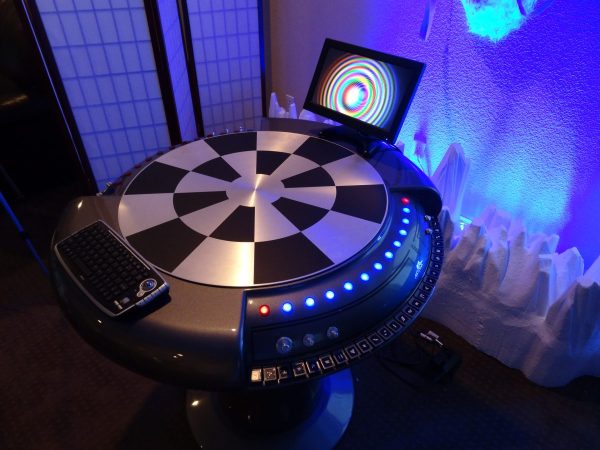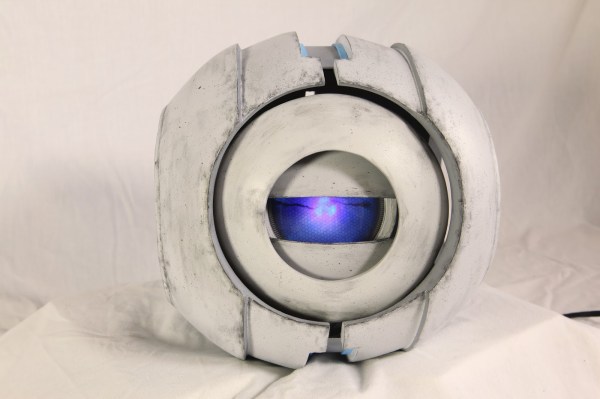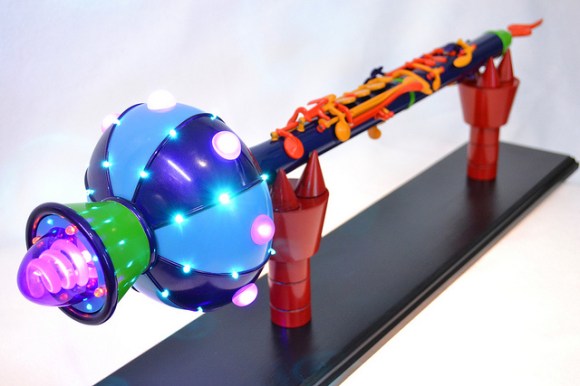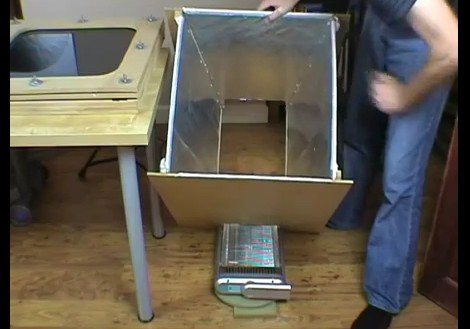A bubbling Wurlitzer juke would be a prized addition to the classic picture of a man cave — brass-railed bar, kegerator, pool table, tin signs and neon on the walls. But it would take a particularly geeky abode to give a proper home to this Millenium Falcon holochess table jukebox. And a particularly awesome one at that.
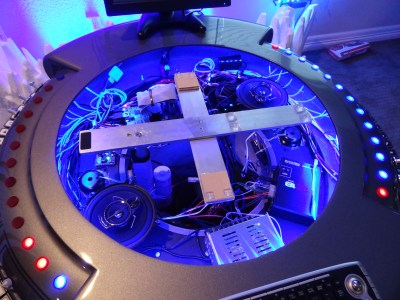 It all started with a very detailed and realistic replica of a holochess table made by [Jim Shima]’s friend. A lot of time and care went into the prop, and [Jim] was determined not to alter the look while installing the media player gear, consisting of a Raspberry Pi running OSMC and a 160-watt power amp.
It all started with a very detailed and realistic replica of a holochess table made by [Jim Shima]’s friend. A lot of time and care went into the prop, and [Jim] was determined not to alter the look while installing the media player gear, consisting of a Raspberry Pi running OSMC and a 160-watt power amp.
The speakers were problematic – there was nowhere convenient to mount them except under the brushed aluminum playing surface of the table. The sound quality was less than acceptable, so rather than poke unsightly holes in the table, [Jim] devised a servo to lift the table while the music is playing.
An LCD monitor and wireless keyboard slightly detract from the overall look; we’ll give [Jim] a pass until he can come up with a holographic display to finish the build right. But we are disappointed that he didn’t use “Mad About Me” by Figrin D’an and the Modal Nodes as the demo tune in the video below.
It’s a nice build, and you’ll want to check out [Jim]’s Hyperdyne Labs for more drool-worthy props and effects. And for another fandom jukebox, look over this jukebox that’s bigger on the inside.
Continue reading “Levitating Table Makes The Sound Of This Holochess Jukebox”

